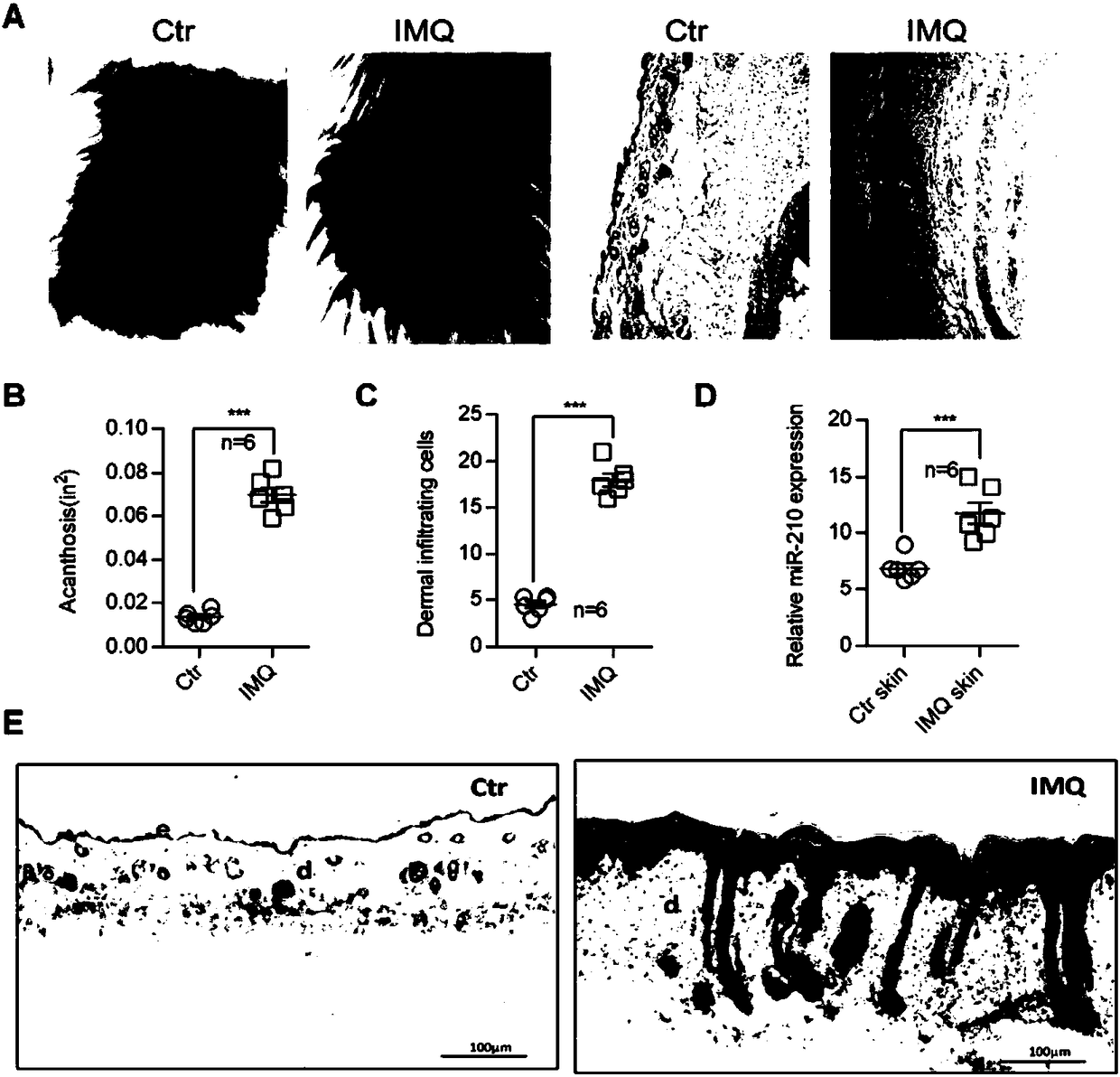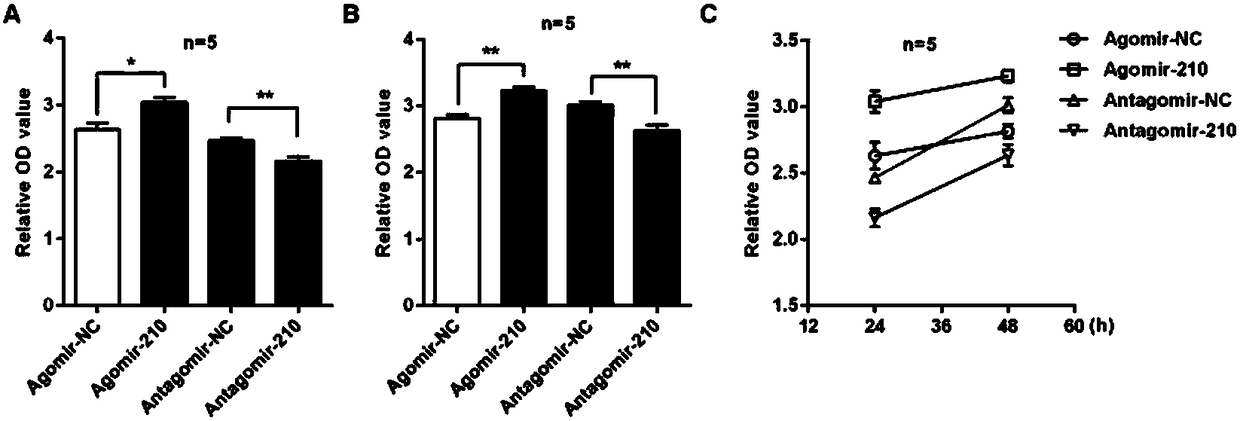Application of microRNA-210 inhibitor in preparing medicine treating inflammatory dermatosis
A technology of microrna-210, 1.microrna-210, which is applied in the field of biomedicine and can solve problems such as uncertainty
- Summary
- Abstract
- Description
- Claims
- Application Information
AI Technical Summary
Problems solved by technology
Method used
Image
Examples
Embodiment 1
[0041] Example 1, the expression of microRNA-210 is increased in IMQ-induced inflammatory lesions of mice
[0042] Select 12 7-week-old, healthy female Balb / c mice with back hair removal 2×2cm 2 Afterwards, they were randomly divided into two groups: the first group was the model group, and each mouse was coated with 5% imiquimod ointment 62.5mg / d on the depilated area of the back every day, for 6 consecutive days; the second group was the normal group, each mouse Apply matrix ointment 62.5 mg / d to the depilated area on the back of the mouse every day for 6 consecutive days. On the 7th day after modeling, the mice in each group were killed by neck breaking, and the skin lesions on their backs were taken, fixed in formalin solution overnight, dehydrated, embedded in paraffin, sliced for HE staining, and histopathologically observed under a microscope Change. The results showed that compared with the normal group mice, the skin of the mice in the model group had visible sc...
Embodiment 2
[0045] Example 2. Research on the influence and mechanism of abnormal expression of microRNA-210 on keratinocytes and T cells
[0046] 1) microRNA-210 promotes keratinocyte proliferation
[0047] In this experiment, primary human keratinocytes were used. 12 hours (hours, hrs) before transfection, the primary human keratinocytes were seeded in 96-well plates, and cultured with corresponding 100 μL serum-free at 37°C, 5% CO 2 Cultivate in the incubator for 12h. When the cells grow to 90% confluence, transfect agomiR-210 (microRNA-210 mimic), antagomiR-210 and the corresponding negative control into keratinocytes, replace the fresh medium after 6hrs, and continue to culture for 24hrs or 48hrs . 4 hrs before the end of the culture, 10 μL of CCK8 solution was added to each well to continue the culture for 4 hrs. Cell proliferation was detected at a wavelength of 450 nm. The results showed that overexpression of microRNA-210 could significantly promote the proliferation of prim...
Embodiment 3
[0063] Example 3. Overexpression of microRNA-210 in vivo can significantly promote and aggravate IMQ-induced inflammatory skin lesions in mice
[0064] Select healthy female Balb / c mice aged 6-8 weeks, with hair removal on the back of 2×2cm, and randomly divide them into two groups: 1) agomiR-210 group: apply 5% IMQ ointment 62.5mg / d on the back every day, for 6 consecutive days , and intradermally injected agomiR-210 150 μl (5 nmol) on the back on days 0, 1, 2, and 3; 2) agomiR-NC group: 5% IMQ ointment 62.5 mg / d was applied externally on the back every day for 6 consecutive days, and On day 0, 1, 2, and 3, 150 μl (5 nmol) of agomiR-NC was injected intradermally on the back. Three mice in each group were sacrificed on the 4th, 7th, 10th, and 14th day of modeling, and the clinical and pathological changes of the skin lesions were observed, and histological analysis was performed. The expression of microRNA-210 was detected by real-time PCR. Expression changes. The results sh...
PUM
 Login to View More
Login to View More Abstract
Description
Claims
Application Information
 Login to View More
Login to View More - R&D
- Intellectual Property
- Life Sciences
- Materials
- Tech Scout
- Unparalleled Data Quality
- Higher Quality Content
- 60% Fewer Hallucinations
Browse by: Latest US Patents, China's latest patents, Technical Efficacy Thesaurus, Application Domain, Technology Topic, Popular Technical Reports.
© 2025 PatSnap. All rights reserved.Legal|Privacy policy|Modern Slavery Act Transparency Statement|Sitemap|About US| Contact US: help@patsnap.com



